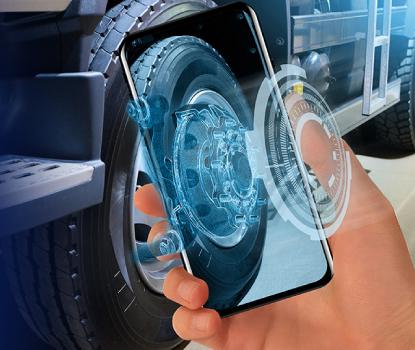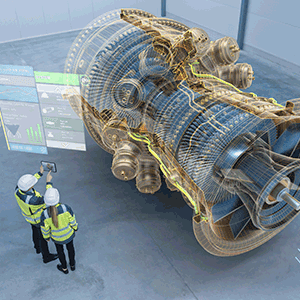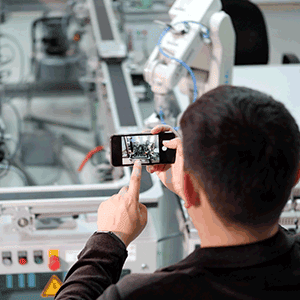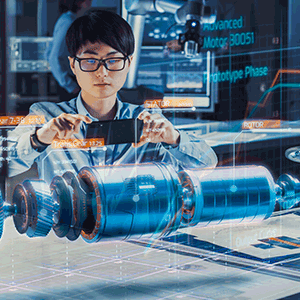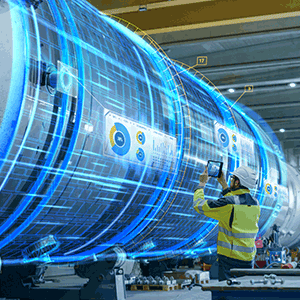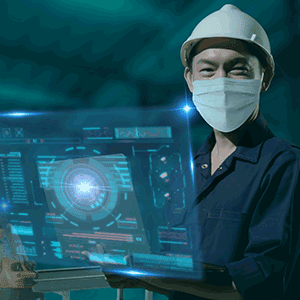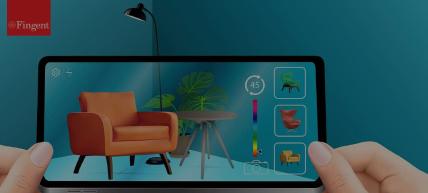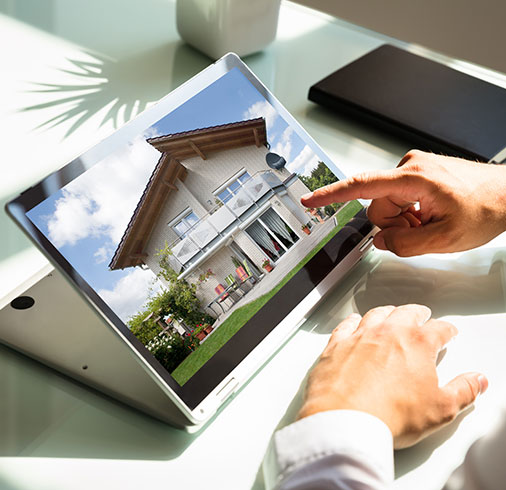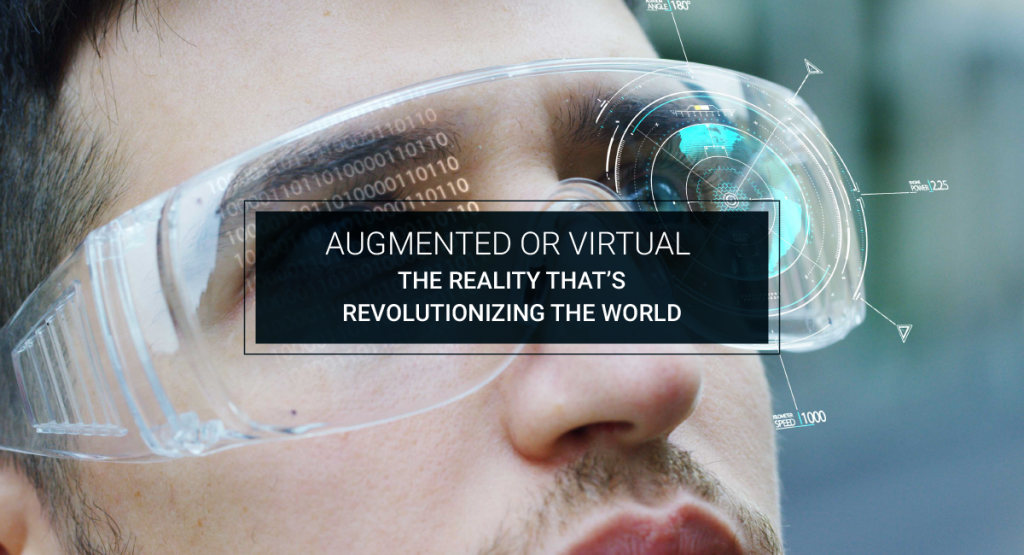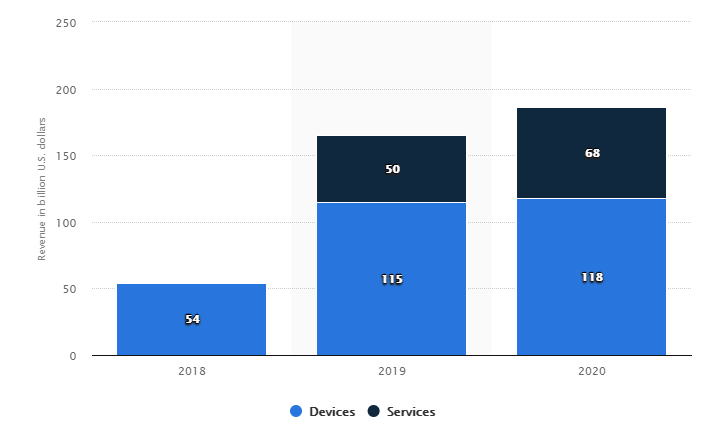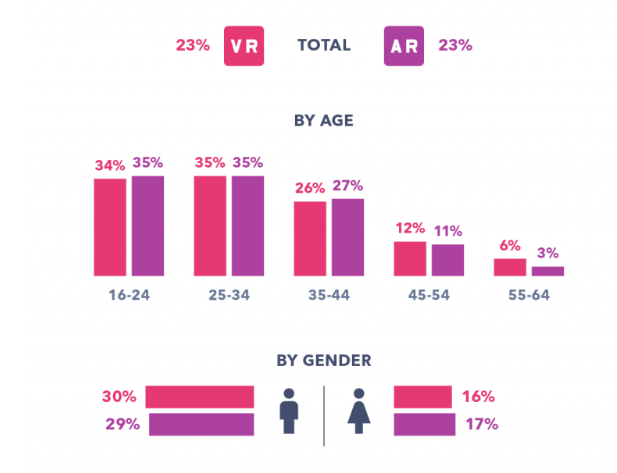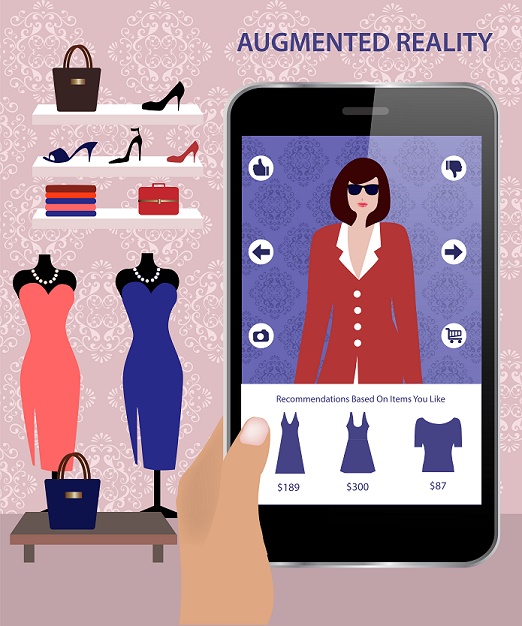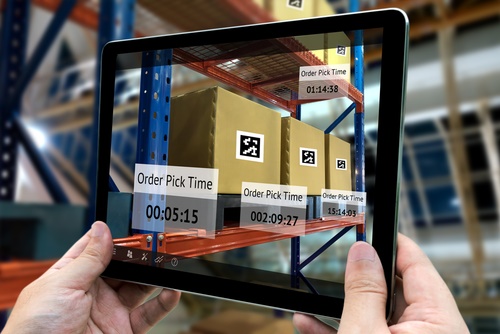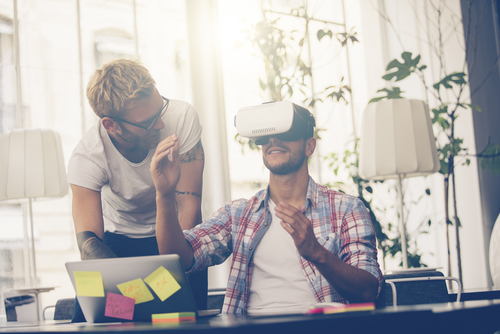Tag: augmented reality
How AR and AI work together to build unique mobile experiences?
The intriguing partnership of Augmented Reality (AR) and Artificial Intelligence (AI) is a match made in the digital heaven. An AR application can become more beneficial when AI is incorporated into it. The natural bridging of AR and AI enables mobile app developers to build more interactive and intriguing apps. This article explores a few practical ways in which AR and AI can be combined to build incredible mobile experiences.
Awesome Ways AI and AR Complement Each Other
The partnership between AR and AI is likely to have a profound impact on customer experience. Companies are developing next-generation applications for mobiles that employ AR and AI technologies. In fact, AI is the heart of AR platforms.
Related Reading: How Top Brands Embrace Augmented Reality for Immersive Customer Experiences
Though Artificial Intelligence and Augmented Reality have distinct technologies, they can sync with one another on a variety of applications. They can leverage each other’s best features and aspects building incredible mobile experiences. AI enables AR to have a multidimensional interaction with the physical environment. It allows you to manipulate 2D and 3D virtual objects with your words, eyes, and hands.
It is anticipated that the demand for AR apps is bound to soar in the next four to five years. Hence, the search for appropriate software development kits (SDK) and application program interfaces (API) for AI and AR is on.
Current State of SDKs and APIs For AR and AI
As the capabilities of current SDKs (Software Development Kits) and APIs (Application Programming Interfaces) rapidly expand, the number of commercial opportunities increase exponentially. Consider a few examples:
-
- Vuforia: It is an Augmented Reality SDK that enables app developers to build mobile-centric, immersive AR experiences. It is capable of supporting both IOS and Android, allowing brands to develop apps with minimal commercial and technical risks.
- ARCore: It is Google’s proprietary AR SDK. It enables developers to get their AR apps up and running on mobile devices. ARCore supports IOS devices and allows developers to build rich and immersive AR experiences supported by mobile devices.
- Core ML: It is a Machine Learning framework used across Apple devices. This API allows you to perform real-time predictions of live images on your device. Its low latency and near real-time results are its biggest advantages. Core ML is an application that can be run without network connections.
- TensorFlow Lite: It is an open-source deep learning framework focused on mobile device inference. TensorFlow Lite enables developers to insert their own custom models.
Practical Ways to Combine AR and AI
The marriage of AR and AI opens up endless opportunities. Here are a few ways in which this combination is working to create digital miracles.
1. Speech recognition: As an AI model listens to what you say, AR effects appear in front of you. For example, if you say ‘pizza,’ a virtual pizza slice appears in front of your mouth.
2. Image recognition and image tracking: It allows customers to see how an object would look and fit in a given space. Combining AR with AI technology allows users to move still photos of items into a still image of a room and assists them in making a decision. Example: IKEA Place.
3. Human pose estimation: It is a technique that detects human figures and poses. It predicts the positions of a person’s joints in an image or video. This can be used in controlling AR content. Yopuppet.com is one example.
4. Education: It allows students to have new perspectives through interaction with virtual reality. For example, it enables them to visualize and interact with a 3D life-size version of the human body.
Related Reading: Impact Of Augmented Reality In Education Industry
5. Recognizing and labeling: When the camera is pointed to a scene or an image, the AR app displays a label that indicates the object or the item when it recognizes it.
6. Car recognition: Using a smartphone camera, it allows its customers to sit inside the car and explore the car’s interiors. There isn’t even a need to download the application.
7. Object detection: AR-AI combination can be applied to automatically learn and detect the position and extent of the objects within an image or a video. This mobile-friendly model facilitates interaction between physical and digital objects.
Take Away
The bridging of AR and AI is offering businesses an opportunity to empower their customers more than ever before with information shared in captivating ways. Together, AR and AI continue to enhance mobile experiences. It enables developers to design richer and more intuitive, relevant experiences for their diverse consumers. As we noted earlier, the applications of AR and AI are numerous.
To know more about how Fingent can help you build incredible mobile experiences by combining AR and AI, get in touch with our experts today!
Stay up to date on what's new

Featured Blogs
Stay up to date on
what's new



Talk To Our Experts
How Extended Reality Is Transforming Business Environments?
Picture yourself diving into crystal-clear Grecian waters or taking a walk on the moon, all the while sitting in the comfort of your home. As fantastical as this may seem now, Extended Reality is making this possible as we speak. What is Extended reality and what are its powerful real-world applications? Let’s check.
Understanding What Extended Reality Is
Extended Reality is a blanket term that encompasses all virtual and real environments generated by computer technology. This includes components such as Virtual Reality, Augmented Reality, and Mixed Reality. Extended Reality is poised to completely revamp the way businesses interact with the media and has the potential to allow seamless interaction between the real and virtual worlds allowing its users to have a completely immersive experience.
Three Remarkable Components of Extended Reality
These components fall under the category of immersive technologies that can affect our perceptions. Here is a little bit about them:
Virtual reality: Virtual reality transposes its users to a different setting through a simulated digital experience. It makes use of a head-mounted display (HMD) to create an immersive experience by simulating as many experiences as possible. Virtual reality app development has witnessed significant adoption in industries like healthcare and real estate.
Augmented reality: Augmented reality services have emerged as a powerful tool in various industries, including healthcare and real estate. With the development of augmented reality apps, businesses can enhance user experiences by overlaying digital elements onto the real world. This technology offers exciting opportunities for immersive and interactive interactions, transforming the way we perceive and interact with our surroundings.
Mixed reality: Being the most recent advancement among reality technologies, mixed reality is experienced through mixed reality glasses or headsets where you can interact with physical and digital objects in real-time.
Related Reading: Augmented Reality Vs. Virtual Reality – The Future Technology
The implementation of these technologies through extended reality is enabling businesses to create innovative solutions and increase customer engagement, reduce human error and improve time efficiency.
5 Powerful Real-World Applications of Extended Reality
“The market for Extended Reality is expected to have a compound annual growth rate of more than 65% during the forecast period of 2019-2024,” says Mordor Intelligence.
Check out these five real-world applications of extended reality:
1. Entertainment and Gaming
The entertainment and video games industries are the foremost users of Extended Reality. Camera tracking and real-time rendering are combined to create an immersive virtual environment, allowing actors to get the real feel of the scene, thereby improving their performance. The extended reality also allows for multipurpose studio environments, thus reducing the cost of an elaborate movie set.
Video gaming is enhanced by the ability of Extended Reality to create a comprehensive participation effect. This allows users to dive into a completely different reality. Other entertainment events such as exhibitions and live music can also be enhanced by the capabilities of Extended Reality.
2. Employees and Consumers
- Training: Extended Reality allows employees to be trained and educated in low-risk, virtual environments. Medical students, surgeons, firefighters, pilots, and chemists can closely simulate risky scenarios with minimal risk and less expense. The experience they gain will prove invaluable when they handle real-life situations.
- Information: Replacing physical manuals, Extended Reality can enable technicians to focus on the task without having to flip the pages of a manual. It can even connect an expert remotely to the real-time issue for his expert advice. This would save organizations a whole lot of money, and more importantly save them valuable downtime as they wouldn’t need to wait for experts.
- Improve customer perspective: Simulating virtual experience brought on by specific diseases and impairments can help doctors and caregivers receive empathy training.
Related Reading: How Top Brands Embrace Augmented Reality for Immersive Customer Experiences
3. Healthcare
Extended Reality is improving healthcare by streamlining medical procedures while enhancing patient care. Allowing surgeons to visualize the complexities of the organs in 3D, it is enabling them to plan each step of a complicated surgery well in advance. Essentially, it is ensuring that surgeons can perform surgeries in a more safe, effective and precise way.
4. Real Estate
Extended Reality makes it easier for real estate agents and managers to close a deal by enabling prospective homebuyers to get a real feel of the property. The layout scenarios that are enabled by Extended Reality enhance customer experience while providing strong business opportunities.
Related Reading: AR and VR- Game Changers of Real Estate Industry
5. Marketing
Extended Reality enables marketers to give their consumers a ‘try before you buy’ experience. It allows consumers to be transported to a place, immerses them in that world and motivates them to explore it. As an example, Cathay Pacific used a 360◦ video with hotspots to help potential customers experience the brand firsthand. That increased customer awareness by 29% and brand favorability by 25%.
Face the Future with Extended Reality
There are many more advancements and applications to be discovered with Extended Reality, and it is soon going to be imperative to competitive advantage. Don’t let your business fall behind. Consult with Fingent, a top custom software development company, today and ensure you stay ahead of the curve.
Stay up to date on what's new

Featured Blogs
Stay up to date on
what's new



Talk To Our Experts
How to Solve Accounting Challenges in Business with Augmented Intelligence
The challenges faced by finance and accounting teams are like the underwater icebergs that can crash a huge ship. The Titanic sank because of poor decision-making. Likewise, weak financial decisions can affect your business. This blog will help your finance and accounting teams to identify the hidden challenges and provide insights on how to use Augmented Intelligence to overcome complex business challenges effectively.
5 Reasons Why Augmented Intelligence Is Gaining Importance
Many businesses are embracing Augmented Intelligence because;
- Enormous volumes of data can be processed quickly and efficiently with Augmented Intelligence.
- Accounting tasks such as audits, payrolls, taxes, and banking can be automated using Augmented Intelligence.
- Due to its ability to continuously learn, Augmented Intelligence can constantly improve efficiency while eliminating the risk of human error.
- It enables humans to make crucial decisions without bias by providing fair information and recommendations.
- Tedious tasks such as bookkeeping can be automated and streamlined.
Top 4 Solutions Offered by Augmented Intelligence
Challenge 1: Protecting the business from fraud
According to the 2018 global fraud and identity report, 63% of businesses still continue to experience the same number or more fraud losses than the preceding year. And only 54% are ‘somewhat confident’ in their ability to detect fraudulent activity. The wide variety of fraud types and the enormity of the work involved in reviewing the data manually or by rule-based systems can make the detection and prevention of fraud a huge challenge.
Solution:
With the help of Augmented Intelligence, large transactions can be analyzed in real-time which helps in detecting fraud. Since Augmented Intelligence can even categorize the score of fraudulent activity, investigators are able to prioritize their work effectively. Once the fraud is detected, Augmented Intelligence allows you to reject the transaction outright. Since Augmented Intelligence continues to learn from past data, it can learn from investigators’ reviews and understand how to discern patterns that lead to fraudulent activities.
Related Reading: Artificial Intelligence and Machine Learning: The Cyber Security Heroes Of FinTech
Challenge 2: Risk Assessment
While evaluating potential risks in lending money or providing credit, businesses could end up denying credit without assessing their current situation using traditional methods. Worse yet, they could end up approving credit to churners who could affect profits. The organization might also face the challenge of explaining to the consumer the reason for denying them credit.
Solution:
Augmented Intelligence helps you assess your customers’ current income and recent credit history based on the enormous data that is available at hand. This allows for a more realistic and accurate assessment of each borrower. Such kind of assessment allows financial firms to make more individualized decisions. Besides, Augmented Intelligence can provide reason codes which would explain the important aspects involved in credit decisions, making it easier to provide reasons why credit is being denied.
Challenge 3: Trading and Investment
According to a 2018 survey conducted in the US, 70% of millennials use mobile banking in the US alone. And this figure is steadily increasing all over the world. Businesses cannot function without mobile applications. It has become a channel of interaction with customers who would like to review transactions, pay bills and find customer service. Failed interactions would translate into increased customer churn, lost transactions and even lost revenues.
Solution:
Augmented Intelligence can assist your business in detecting anomalies in transaction volume by identifying the triggers for such anomalies. Based on previous data patterns, the system can look at expected data volumes which can then be compared with real-time transaction values. This will help in your decision-making process because it clearly and quickly indicates the highs and lows of a transaction by suggesting solutions that meet each individual demand.
Challenge 4: Combating Money Laundering
It is estimated that the amount of money laundered globally in one year is 2 – 5% of the global GDP! And this seems to be increasing at an alarming rate. To combat money laundering, extensive investigations must be performed by the finance and accounting teams.
Solution:
Augmented Intelligence can detect suspicious and complex transactions and raise a red flag on such transactions so investigators can further examine them. Augmented Intelligence can learn from each experience and more effectively safeguard your firm.
Related Reading: The Future Of Communication and Security Using Augmented Reality
Discover New Growth Opportunities by Applying Augmented Intelligence
Augmented Intelligence can help finance and accounting teams reduce costs, improve operations, increase consumer satisfaction and reduce the time taken for various processes by 80-90%. It can also reshape your entire organization from internal operations to treasury services. It can assess the available unstructured content and help your business unlock valuable insights from them. This enables smarter decision making, which in turn helps in the growth of your business.
When your business adopts Augmented Intelligence as part of your methodology, it gives your customers benefits that will lead to loyalty and growth. Fingent top custom software development company has been helping many clients achieve this, and we can help you too. Give us a call and let’s discuss.
Stay up to date on what's new

Featured Blogs
Stay up to date on
what's new



Talk To Our Experts
Can Augmented Reality Improve Conversion Rates For Businesses?
Augmented Reality (AR) is a powerful tool that brands are using to bridge the gap between their products and their digitally empowered customers. With the power of AR, customers can see and experience their products without actually trying them on, helping them make purchase decisions instantly. AR is being widely used by many brands as the most cost-effective way to convert strangers into customers and promoters.
Let’s consider why and how top brands are embracing Augmented Reality for immersive customer experience.
Top Brands Embracing AR
When AR technology was pioneered by Ivan Sutherland in 1968, he described his concept of the Ultimate Display as: “The ultimate display would, of course, be a room within which the computer can control the existence of matter. A chair displayed in such a room would be good enough to sit in. Handcuffs displayed in such a room would be confining, and a bullet displayed in such a room would be fatal. With appropriate programming, such a display could literally be the Wonderland into which Alice walked.”
Today we are witnessing the massive affect AR is having on immersive customer experience. Wonderland looks close!
Here are a few examples of top brands that are using AR effectively to achieve this.
LEGO Wear’s AR Shop
LEGO Wear’s first limited-edition clothing line for adults was featured on Snapchat with a uniquely designed Snapcode. This virtual cloth store had no clothes on display but allowed customers to shop virtually on a Snap-triggered portal. Studies reveal that Snachatters engage with Augmented Reality naturally on a large basis.
Around 70% of them play with an AR lens every day. So with the combination of AR and e-commerce leading to exciting customer experience, the company was able to drive sales rapidly.
Watch how AR simplify equipment maintainance
This video is made using InVideo.io
Patron Tequila’ s Immersive Distillery Experience
Patron’s AR app is designed for its tech-savvy customer persona. Understanding the mindset of today’s socially connected generation to know more about the products they consume, the Patron AR app allows its customers to take a virtual tour of their distillery in Mexico giving them a glimpse of the history and origins of the distillery.
Speaking about the success story, the app-enabled more than a million consumers to have a memory of visiting Hacienda without even physically going to the place. Also, thousands of people have interacted with a virtual Patrón bartender, who is actually not a real person at all, but a robust data processing tool to simulate a real-world interaction.
Nike Snaps Up Customers
The Air Jordan Brand in collaboration with Snapchat and Darkstore, out together a virtual experience that brought in record sales last year. Using a special 3-D AR world lens of Michael Jordan circa 1988, taking off from the free-throw line in the slam dunk contest, Nike was able to target Snapchat users around the Staples Center where an NBA All-Star Game was taking place.
Users could walk around the lens and see Jordan changing into the All-Star uniform and the new AJ III Tinkers. In the following event, Snapchat brought out a QR code that users could use to buy the shoes from the Snap Store. The shoes would be delivered within 2 hours. The shoes sold out in 23 minutes!
MAC Cosmetic’s AR-enabled Video Tutorial
In June of this year, MAC cosmetics launched AR-enabled shoppable video tutorials on YouTube in partnership with the beauty influencer, Roxette Arisa. As the tutorial is playing, a ‘try on’ button appears below the video, allowing viewers to try on different shades of lipstick as they continue to watch the tutorial.
Once they have made a choice, they can order the lipstick without leaving the app. MAC sees a huge potential in this as beauty-related content generated more than 169 billion views on YouTube last year.
Speedo’s Customers Try It On Virtually
Early this September, leading swim gear company Speedo launched a mobile app that lets their customers try out their goggles before they buy it. This app is compatible with both Android and iOS phones. Commenting on this feature, Pentland Brand’s head of innovation Ben Hardman said, “This technology will undoubtedly enhance our customers’ shopping experiences by allowing them to interact with the product before they make a purchase. In this instance, it helps them address a well-documented human pain point: leaky goggles.”
AR Is the Future – Are You Ready?
AR technology is working wonders for the sales and productivity of many brands. It is improving its business operations while giving their customers a more immersive and fun experience. Brands are able to market their products in fresh and interesting ways and are seeing great returns.
Fingent works with brands to achieve this for their business. By using AR technology like Microsoft HoloLens and more, we are making AR possible for our clients.
Reach out to us and know how Augmented Reality technology can be used to improve your customers’ experience and scale your business.
Stay up to date on what's new

Featured Blogs
Stay up to date on
what's new



Talk To Our Experts
Stay up to date on what's new

Featured Blogs
Stay up to date on
what's new



Talk To Our Experts
What Is Augmented Reality?
Do you fancy playing Nintendo’s game Pokemon Go? Or used the IKEA mobile application? These are 2 examples of how Augmented Reality technology has taken over the digital world to heights.
The much-hyped AR technology has had a technological breakthrough in recent years and has witnessed many innovations. Snapchat Lenses are yet another example of AR technology implementation. AR keeps the real-world focus. It adds virtual elements to improve the user’s experience.
The AR technology superimposes a CG (Computer Generated) image of the real world for the user. For instance, the Pokemon Go game provided its users with superimposed images, allowing the users to catch Pokemon simply by looking at their smartphones. The game had 65 million users as it gained popularity.
What Is Virtual Reality?
If you have used VR devices such as Play Station VR (PSVR), you would understand how Virtual Reality technology completely provides an immersive experience by completely shutting you off from the rest of the world.
VR technology is a display technology to create a simulated environment for the user. The key players in VR technology include Oculus Rift, HTC Vive, and so on.
Augmented Reality And Virtual Reality: Game-Changer For The Real Estate Industries
AR and VR technology has seen immense growth in recent years and is continuing to grow rapidly. According to recent Statista reports, by the year 2025, the total revenue in the VR/AR industry is estimated to be $2.6 billion.
Initially, the real estate sector has been using 3D Video and 3D Photography for creative interactions with their clients. They used to portray this technology for showing their clients the interiors of the buildings etc. Virtual reality, thus enhanced the viewing experience for the clients of real estate builders and agents, without the viewers having to visit the premises physically.
From helping the construction industry to market, improve and maintain sites to train the workforce on security, Virtual Reality is a game-changer for the real estate industry! Let us see how:
Why The Real Estate Sector Needs AR And VR Technology Implementation
Virtual and Augmented Realities are Immersive Technologies that can create a new reality altogether by leveraging the 360 space. These technologies save time and expenditure significantly for buyers, sellers, agents, etc. Technological advancements have contributed to the increased use of immersive UX (User Experiences), thus easing the process of selling and/ or buying residential and commercial real estates. Implementing these advanced technologies in Real Estate will ease both buying and selling of properties.
Related Reading: Check out how real estate technology helps predict property prices
AR And VR Technologies: Benefits In The Real Estate Industry
A recent survey by the National Association Of Realtors stated that 95% of users search the Internet before buying a property. The major benefits that can be leveraged out of AR technology are as follows:
1. Better Clarity Over Properties
Augmented Reality technology makes everything real and interactive with its ability to carry blueprints and images in real-time. AR mobile applications offer users a visual walk through the properties.
2. Cost-effectiveness
AR replaces traditional marketing techniques offered by realtors to reach out to potential buyers. In addition to saving cost overheads, AR technology improves brand loyalty as well.
3. A Better Reach-Out Platform
An AR mobile application on your smartphone offers a better reach-out than having to physically be present in worksites.
4. Offers A Global Reach
With VR, arranging virtual visits, showing users the properties virtually, and negotiating costs with the users are made easy, even to long distance buyers.
Related Reading: Check out how smart home technology is creating an impact on real estate.
AR/VR technologies allow users to refine searches and avoid unproductive visits to any property. Let us walk through the key benefits that the technology of Virtual Reality has to offer:
5. Virtual Visits
VR technology allows people to visit properties virtually which not only saves cost but time as well. Putting on a VR headset, users get an immersive experience by having 3D walk-throughs of properties. There are 2 types of 3D virtual tours. They are as follows:
- Guided Visits – These are for existing properties that lets you capture a 360-degree video. Users can wear a VR headset or a gadget such as Google Cardboard to view the properties. This does not require any programming or complex rendering.
- Interactive Visits – Users can decide where to move within the property, by choosing specific hotspots in their field of view.
6. Virtual Staging
According to the statistical report by the National Association Of Realtors, 77% of real estate agents prefer to use virtual staging to help potential buyers to associate with a property they intend to buy. VR technology helps realtors to market-specific staged properties with minimal investment.
With the advent of technology, 3D tools are used to create a virtual representation of spaces with required furnishings. For this, the 3D photographs are taken and further staged with the help of a 3D scanner.
7. Visualizing Architecture
Architectural Visualization has become immersive with the advent of VR technology. Potential buyers can imagine how their future properties will look like. The 3-dimensional computer-generated environment helps realtors create full-scale models of buildings and properties. VR technology thus helps in pushing thresholds without the risks associated with time and costs.
8. Efficient Communication With Tenants
3-dimensional tours in real-time with tenants can help landlords and real estate agents communicate with their tenants effectively. The VR technology is found to be more efficient and productive in case of vacation rentals especially. This is because businesses that offer short vacation rentals have high turnover rates associated with it, compared to others.
9. Virtual Commerce
According to a recent eCommerce statistic report, 77.24% of potential buyers who intend to buy online, abandon their idea of purchasing. This shows a lack of convincing customers to go ahead with their initial choices. Virtual Reality technology finds use in these situations with its immersive capability.
With the mobility element of the VR technology, around 24 million VR devices were estimated to be sold globally, according to insights from CSS.
With VR technology, after taking a virtual tour of the property, users can order from the virtual store as well.
Related Reading: Read on to know What Not To Do In Real Estate Business.
AR And VR Technologies – Future Game-Changer For The Real Estate Industry?
Immersive AR and VR technologies provide users the benefit of Analytics. This feature allows realtors to now derive critical insights and enhance the buying decisions of potential customers.
Providers of Analytics can offer web-page related KPIs (Key Performance Indicators). This includes page views and web sessions. Nuanced buyer behaviors can be better judged with data analytics.
To conclude, AR and VR technologies reduce unnecessary expenditures associated with staging and scheduling visits. It helps users visualize properties and reduces the overall costs.
Use of VR to support USA smart cities are forecasted to reach $330 million by the year 2024.
AR and VR technology is surely the next big technological breakthrough in the real estate industries. For more insights on how to transform your real estate business digitally with immersive technologies, call our strategists right away!
Stay up to date on what's new

Featured Blogs
Stay up to date on
what's new



Talk To Our Experts
How Is Augmented Reality Revolutionizing Education Industry?
Augmented reality is the latest breakthrough technology in the digital space. It has been almost half a century from when the concept of Augmented Reality first appeared in 1968, and as Augmented Reality (AR) is penetrating deeper, its uses continue to increase.
By 2022, worldwide shipments of smart glasses are estimated to reach 32.7 million units. And by 2025, the global augmented reality market is anticipated to grow noticeably to about 198 billion U.S. dollars. With such significant growth, it makes sense to consider how AR can benefit our daily lives. In this blog, we will discuss its impact on the education sector in particular. Let’s begin by understanding what AR is.
Read More:
What is Augmented Reality?
Augmented Reality is the bridge that connects the real world with the virtual world. Its popularity is growing rapidly in every industry from social media filters to surgical procedures. As the word augment suggests, AR enhances what we hear, see and feel. It has categories based on various technologies. Some of those categories are marker-based AR, markerless AR, projection-based AR, and superimposed AR. This makes AR useful for various industries.
There are various industries such as public safety, tourism services, entertainment and so on that are leveraging AR. For example, AR aids the automotive industry by assisting with various parameters such as navigation and speed. It helps people not to lose focus while driving because the application can be projected from a console on the glass which only the driver can see. In Healthcare, there are numerous AR applications that support the video platform and can project augmented hands on the patient. Wherever the surgery is taking place, a senior surgeon can guide a beginner in his surgery.
With many more industries benefiting from AR, let’s see how the education industry is revolutionizing with AR.
The Role of Augmented Reality in Education
AR is set to revamp the world’s conventional learning model. It can bring about a positive change in the location and timing of classes and make learning more engaging. Today’s learning process is becoming much more tuned to bring in the elements of interaction and creativity. By providing visual representations, AR helps students acquire, process, and remember information. Thereby, it helps them to test out their knowledge in practice.
AR technology has also helped students to learn and understand their surroundings. The British Museum has already begun using AR technology to help students understand certain displays. It has proved useful in providing students practical knowledge of subjects such as math or science. Let us look into a few more benefits of AR in the educational sector.
1. Edutainment versus Education
AR makes lessons fun learning. Today’s generation is not a chalk and board generation. Studies reveal that students are easily bored with standardized methods of teaching. The reality is that students tend to remember what they see more than what they learn by rote. AR takes them to the next level by helping them not just to see, but also experience and participate. As a result, AR delivers a positive impact on the students by giving them edutainment.
2. Simplify Complex subjects and Exemplify Abstract Concepts
AR breathes life into complex subjects that students are expected to learn. It can bring added creativity, interactivity and engagement to complex and abstract subjects. It simplifies the learning process. Both the teachers and the students likewise can thus take control of the educational process through AR.
Each student’s level of understanding and the pace of learning differs. Certain AR apps allow you to create personalized learning materials. Such apps allow the tutor to create content for the individual needs of each student. This way, students will get to learn complex subjects quickly and easily.
3. AR-Enabled homework
AR can also help students do their assignments and homework better. The fact that today’s generation is tech-savvy can be harnessed to promote education in a way that will appeal to the students.
AR emphasizes important concepts. By making images and information “pop out” of a textbook, AR can break the boundaries of textbook learning, which has been sidelined as boring and tedious and make it interactive and absorbing.
4. Use what they already have
According to the Pew Research Center, 95% of teenagers have access to smartphones. It makes sense to use this to their advantage in education as well. Neither parents nor teachers have to spend extra dollars on buying gadgets for AR learning. The AR app on an existing smartphone is all that is required for interactive learning.
5. Practical Knowledge at AR Labs
For various reasons, schools may choose to limit the scope of practical demonstrations. This is another fact that will change through the use of AR technology. With AR, students can perform practical experiments without the need of the physical lab. This is extremely helpful for professional courses. Students can also gain knowledge about safety procedures and potential hazards in the lab.
Augmented Reality is the Real Future of Education
According to a survey on the impact of interactive technology on marketing students, it is said that 87% were likely to attend the class, 72% were likely to participate and 70% students said that they improved their understanding of specific concepts. If this is true with interactive technology, how much more of an impact would AR have on the student’s attendance, participation, and understanding?
The children of millennials who are born between 2010 and 2025 are called Generation Alpha, which is considered the most technology-infused. AR education is poised to be the norm rather than the exception. According to the forecast, the AR market is expected to reach $60.55 billion by 2023, growing at a CAGR of 40.29%. Undeniably, AR is the real future of education.
Watch more on how Augmented Reality is creating an impact on the Education Industry.
This video is made using InVideo.io
Fingent is on a go, to revolutionize education sectors with AR technology. With various education application platforms, Fingent is already helping organizations create effective collaboration between students and teachers. To know more about how Fingent can help you provide an effective and efficient learning ecosystem with emerging and trending technologies, get in touch with our experts today!
Stay up to date on what's new

Featured Blogs
Stay up to date on
what's new



Talk To Our Experts
5 Technology Trends Real Estate Players Should Watch Out For
Digital transformation is today the hottest area of interest in almost every business sector. With the huge growth in a digital savvy user base, enterprises big or small are continuously investing in new age digital technologies and tools to help them serve customers better and survive the tough market competition. The real estate sector is no different in this regard as digital technologies have reshaped both the customer and property landscape over the past couple of years. From facilities such as a simple listing of properties online to AI enabled best property matching based on preferences, the list of digital innovations in the real estate sector is huge. If your primary business is centered around real estate, then the following 5 technology innovations should certainly be on your watch list for 2019.
Augmented and Virtual Reality Applications
Today, real estate is a globally accessible commodity and not restrictive to localized demand. A property may attract interest from buyers across the world and not just in the vicinity or city that it is located. The challenge then lies in providing a holistic experience for the interested buyer to have a good look and feel of the property before investing. It may not always be possible to bring them physically to the place due to cost or other travel related concerns. This is where technology such as AR and VR can make a difference. With hardware devices, making AR/VR capabilities, inexpensive and accessible, property managers can easily facilitate an AR/VR demo for buyers to make faster and better decisions from anywhere. Another useful application would be for homeowners to use AR/VR to decide their home décor or construction techniques. For example, the positioning of furniture, temporary or permanent interior fixtures, etc., can be decided way before the actual construction begins. This allows more planning and elimination of cost overheads wherein both buyer and builder would have a clear understanding of how the building is to be constructed.
Check out how AR and VR are revolutionizing the real estate industry.
This video is made using InVideo.io
Big Data Analytics
Real estate is one sector where pricing is a highly dynamic constituent. There are a number of factors influencing property or land prices and very often owners or enterprises that manage properties find it hard to offer competitive or profitable pricing to prospective buyers. However, several forward-thinking players have now started to utilize the power of big data analytics to get the most preferential pricing schemes that bolster both interests from buyers as well as maintain a competitive profit margin for sellers or property owners. Historical rental or property cost data along with trends such as demographic changes, population density, preferential behavior, amenity choices, spending patterns, etc., are supplied as data insights into powerful analytical systems. These in turn offer insights or in other words recommendations for property owners to price their offerings competitively and enhance the overall buying or rental experience for a consumer.
Related Reading: Find how Big Data is influencing the health care industry.
Innovative Property Management
The rise of start-up culture and the global workforce paradigm has impacted the real estate sector considerably. Today, it is not just one major tenant that leases an entire building or space within a building to set up its office, but several players invest to take up co-working spaces. In fact, studies have shown that shared workspaces have grown at an incredible rate of 200% over 5 years from 2013 to 2018. Co-working spaces facilitate companies to set up a presence where their best employees prefer to work thereby helping in boosting retention levels. For the real estate sector, this change in occupancy trend has called for the rise of innovative property management software that incorporates several new technology offerings. For example, power and other utility services have to be shared among multiple tenants in a co-working space and this requires the property management tool to be integrated with an IoT powered building management system that can monitor occupancy levels, adjust power and other environmental support features like lighting, temperature control, etc. Doing these tasks manually would require considerable overhead and hiring of a large workforce. Autonomous IoT integrated property management solutions can easily facilitate multiple tenants to collaborate in a workspace saving them the hassle of worrying about unwanted costs and the owners can have peace of mind without having to deal with manual supply and maintenance of essential support services.
Related Reading: Check out tips to select the right software for property management.
Blockchain Powered Smart Contracts
While some of the technology advancements we mentioned before require autonomous property management, blockchain is the key ingredient that can help make it possible in real time. The decentralized and highly immutable features of blockchain can help transform real estate management and property leasing considerably. An owner or landlord can easily rent out or sell portions of his property with agreed terms and conditions all recorded on smart contracts. The contract makes the details of the sale or rental highly encrypted and complies with all local laws and regulations. Besides, several government agencies are increasingly investing in blockchain to set up regulatory repositories that can autonomously validate land records, property and tax implications and much more. So, if real estate buyers can bump up their investments in blockchain, they can turn to become more compliant and legitimate in the market. This would increase affection for their offerings for prospective customers.
Digital Advertising and Sales
Today, a large portion of prospective buyers or leasing clients are hooked to social media and other digital channels to gain information. As a real estate dealer, you need to ensure that your properties are marketed in the right digital channel and reach the right audience within such channels. There are tons of social media advertising platforms that help you filter your target audience to the finest level. If you do not want to spend time on the filtering part, there are AI-powered tools that help do the job even better than humans. AI is not just limited to ad filtering for the real estate sector. There are intelligent chatbot applications available today for deployment in your website. These bots can converse with potential buyers when they inquire on your website, collect their information, suggest them the best choices based on their preferences, pass the right information to sales agents to take the lead further and ultimately help them close it quickly. From marketing automation to intelligent sales conversations, there is a host of digital solutions that the real estate players, can utilize to win customer hearts with personalization in highly competitive markets.
Related Reading: Watch out for the emerging technology trends of 2019.
No longer can the real estate sector be labeled as a laggard in terms of technology innovations. There are plenty of digital avenues where smart players can invest and stand out from the competition. We have showcased 5 of these avenues that are increasingly driving more value for adopters and we believe that these should be on the watchlist of any real estate player in 2019. Going digital friendly is no easy task, especially if you do not have a sizeable technology team in-house who is well versed in all these innovations. But that is where a technology partner like Fingent can prove to be the decisive factor in on-boarding the best technology innovations in your real estate business. If you are aspiring to be a leader in the real estate space through technology, talk to our experts today to explore the vast opportunities in digital transformation for your business.
Stay up to date on what's new

Featured Blogs
Stay up to date on
what's new



Talk To Our Experts
A few years back, Augmented Reality (AR) and Virtual Reality (VR) sounded revolutionary, more like the utopian world of the Jetsons. But today, with miraculous capabilities of accomplishing seemingly impossible tasks, AR and VR are invading our lives. With the popularity of Google Earth and Pokemon Go, 2017 showed us remarkable growth and awareness of these technologies. According to Statista, the global augmented and virtual reality market size is expected to reach 20.4 billion U.S dollars in 2019.
Although AR and VR are rapidly transforming various industries, thoughts like-what exactly are these fast-moving digital wonders and which one would mainstream first, linger in many minds. Here are the answers to all!
Augmented Reality – Augmenting the Real World
Augmented Reality is an interactive technology that capacitates the power of augmenting the real world environment with computer-generated perpetual information. What’s amazing about AR is that it brings components of the digital world to the natural environment. With the capabilities of narrowing spaces between reality and technology, augmented reality is expected to revolutionize the world.
Fun Fact: Studies reveal that by August 2017, the total number of downloads of Pokemon Go from Google Play market alone was 100 million.
Augmented reality is known best from the Pokemon Go and Snapchat filters. The IKEA Place app has also managed to win hearts by enabling users to decorate homes using the AR technology. According to a Statista report, augmented reality is expected to generate a revenue of 118 billion U.S dollars from AR devices and 68 billion U.S dollars from AR services.
Fun Fact: The survey conducted by GlobalWebIndex in 2018 showed the following consumer’s perception of augmented reality’s potential in various sectors.
Augmented reality with its capabilities to deliver an interactive and enhanced experience, is expected to project its best in retail and marketing industries. Increasing the array of channels to guide purchases, AR can turn to become the next big thing for retail stores. With AR technology, advertising and marketing industries can also provide more fluid customer experience by utilizing real-time user preferences and data.
Related Reading: Augmented Reality is also growing its pace in the travel industry. Take a look at how innovative travel apps are mesmerizing customers.
Virtual Reality – Exhibiting an Artificial Reality
Virtual Reality is an immersive technology that lets you experience a three-dimensional computer generated environment incorporating a mixture of interactive hardware and software. This technology blinds you out from the real world and takes you to a virtualized reality or an artificial environment. Literally speaking, virtual reality possesses the power to make you believe that you are teleporting.
The most popular forms of virtual reality we witness today are the VR Headsets. Google Earth and the other 360 degree videos on Facebook and YouTube are also versions of the VR technology. According to Statista, the market size of virtual reality hardware and software is predicted to increase from 2.2 billion U.S. Dollars seen in 2017 to more than 19 billion U.S. Dollars by 2020.
Experts predict VR to project rapid growth in entertainment and education industry. Possessing abilities to provide an immersive experience and a unique level of interaction, VR has the potential to evolve faster in these industries. With virtual reality headsets and mobile games, VR has already marked a significant position in the entertainment field.
Fun Fact: According to a survey in 2018 conducted by the GlobalWebIndex, the following is an estimate of consumer’s perception of virtual reality’s potential in various sectors.
Although, adoption of VR in the education industry is very much in its infancy, yet it is expected to transform classrooms and the way students explore colleges in the near future. The one VR miracle that has already gained popularity among students is the Gear Up NC VR app that is enabling students to screen through North Carolina colleges hassle-free.
Fun Fact: Nearly half of the population (42%) predicts that the education industry will become commonplace for VR projects to grow in the next five years. 97% of the people who have used VR for teaching have agreed that VR has the potential to engage students better.
Case Study: Fingent assists the university in developing projects involving upcoming technologies such as AR, VR, and AI
AR or VR – The Technology to Create the Big Impact
Although both the technologies have their own share of pros and cons, augmented reality has a lower awareness rate as compared to virtual reality. This, however, could be due to the age group engaging with the technology. According to a survey, both AR and VR technologies have engagements mostly clustered around the 25-34 age group.
Speaking of potential, although AR is statistically proved to be less popular, yet 50% of the population who have used both these technologies, believe AR to have more potential than VR. Only 47% of these technology users believe VR to create a big impact in the future.
With both augmented and virtual reality offering very different experiences, the fight on which technology ranks the best still remains as an unsolved puzzle. Like how Google’s Clay Bavor once tweeted – “VR vs. AR cheat sheet: VR can take you anywhere. AR can bring anything to you. Both are important. Neither will win”.
Only the future can decide on which technology would steal more hearts and create a big bang. Some experts believe that with the development of more equipment, the line that delineates these two technologies will probably start to get blurry. However, in today’s world, both augmented and virtual reality are equally transforming industries in its own ways. To learn more about how AR and VR can reshape your business, get in touch with our tech consultants now!
Stay up to date on what's new

Featured Blogs
Stay up to date on
what's new



Talk To Our Experts
Augmented Reality is a hot emerging technology that modifies a real-world plain-sight view by superimposing a real-time computer-generated sensory image, sound, video, GPS data, or graphics, in a semantic context. Through such superimposition, Augmented Reality offers a composite view of the environment and an enhanced perception of reality.
Augmented Reality is riding high on a wave of expectations, and many experts tip the technology to transform many walks of life, including the workspace, like never before. Augmented Reality blurs the line between the physical and digital realms. It brings computer-generated graphics to life, making what the employee actually sees interactive and manipulative. The potential applications are endless, limited only by imagination.
1. Better Management of Work
Augmented Reality tool such as HoloLens allows supervisors and managers to remain in better control of the situation, as they are fed with real-time information in the actual context. Instead of taking time out to analyze the situation in a computer or smartphone, they gain real-time insights in the course of their work. They can also make changes and issue instructions using hand or head movements, and voice commands.
Augmented Reality enables trial-and-error, without the usual costs and time associated with the process. An interior designer, could, for instance, use an AR headset to test color schemes, or a jewelry designer could visualize an idea and share it with the customer, before committing to make it. An architect designing a new office could view a real size hologram from all angles, to optimize the settings. A salesman could share his product line with clients in 3D.
2. Better Insights
Using AR powered glasses could offer field technicians insight into the working of machinery, annotating the parts, making explicit fluid and other levels not easily discernable, identifying parts which have failed or not working to the set parameters, and more. Overlaid animations would guide the technician on what to do next. What hitherto took specialists with considerable years of experience and training could easily be handled by a novice technician.
Lockheed Martin is already applying such technology to good effect, employing AR to aid design and make production floor personnel familiar with procedures. DHL is using similar AR technology to make sure employees load carts in the most efficient way possible.
3. Improved Productivity and Efficiency
Augmented Reality delivers optimal and accurate information, in the ideal format, at the precise time, to increase efficiency and productivity manifold. While conventional technology may bring in all details about a customer who walks in at the computer console, AR technologies bring it in front of the worker’s eyeballs. Workers no longer need to stop what they are doing to seek the required information or worry whether the information they gathered is accurate. Gestures and voice replace the inconvenient keyboard, mouse clicks or swipes.
Moreover, the field of view information offered by AR may change dynamically along with the task being performed. For instance, a worker in the warehouse may be guided to the area where a requested item is stored. In a factory, it could notify workers of resource levels or problems on the assembly line on the fly. Conservative estimates peg a 32% efficiency increase when deploying AR.
4. Enhanced Training
AR transforms training, taking it to a whole new level. It enables enterprises to speed up the training process and make it more effective.
Google Expeditions, a virtual reality platform, offers an AR overlay, already allow students to take guided tours deep into the Amazon jungle, or watch a Viennese opera. Implementing similar tools in the workplace would allow trainees to learn the basics and delve into the advanced, in double quick time, with a real feel of things. New hires could be placed in a real-world situation, and be exposed to all possible scenarios, without the disruption and risks characteristically associated with on-the-job training. Augmate’s InstructAR platform is an early step in this direction, aimed at imparting tech and manufacturing training using AR.
Hyper-training with augmented reality facilitates shorter learning curves, better-trained employees, and an all-around more efficient workplace. Boeing trainees assemble a mock airplane 30% faster and 90% more accurately using AR-animated instructions, compared to relying on PDF guides.
5. Furthers Organizational Creativity
Augmented Reality opens the doors for limitless creativity and innovation in the workplace. AR tools may be used to simulate different cause-effect scenarios, to determine an optimal course of action, without having to go through the underlying risks. In an ultra-fast business world brimming with change, such options help business drive much-needed agility and adaptability.
The potential of Augmented Reality to drive innovation is unlimited, especially when blended with employee collaboration, field tests, and presentations. AR can immerse a remote team, bringing employees together from across the globe in a way that feels more real than ever before, boosting collaboration at a global scale.
Augmented Reality also helps enterprises devise innovative ways to effectively deal with contingency scenarios, such as how best to tackle hazardous workplace conditions, how to plan for a contingency such as a live wire falling to the ground in the construction industry, guiding the workforce on protocols in the eventuality of emergencies such as a fire, and much more. AR can take the remote workforce further than existing tools can.
6. Deepen the Engagement
Marketers leverage AR in many innovative ways, from embedding a product brochure with personalized messages to offering a snap preview of a new location, and more. Blippar, a New York-based advertising company has taken the lead in offering augmented reality games with everyday objects, offering ample scope to deepen customer engagement. One innovative Pepsi ad allows users to aim a ball to a goalpost with their eyes, and “kick” it with a quick gesture. The rich data collected on customer habits and behaviors are spin-off benefits.
While AR technology has been in existence for some time now, growth has been sluggish over the years, mainly owing to the limitations in enabling technology. The popularity and easy availability of wearable devices have however changed the scenario, and AR is all set to go mainstream in the near future.
Augmented Reality is all set to enter the boom phase. IDC estimates shipping 99.4 million Augmented Reality headsets by 2021, a tenfold increase from the 10.1 million shipped in 2015, indicating a compound annual growth rate of 58%.
As the adage goes the early bird catches the worm. Your business will surely be better off by introducing Augmented Reality technologies for both internal and external facets of operations. When you partner with us, you can leverage our highly skilled, talented, and experienced team to develop state of the art, cutting edge AR solutions. Get a free consultation.
Stay up to date on what's new

Featured Blogs
Stay up to date on
what's new














